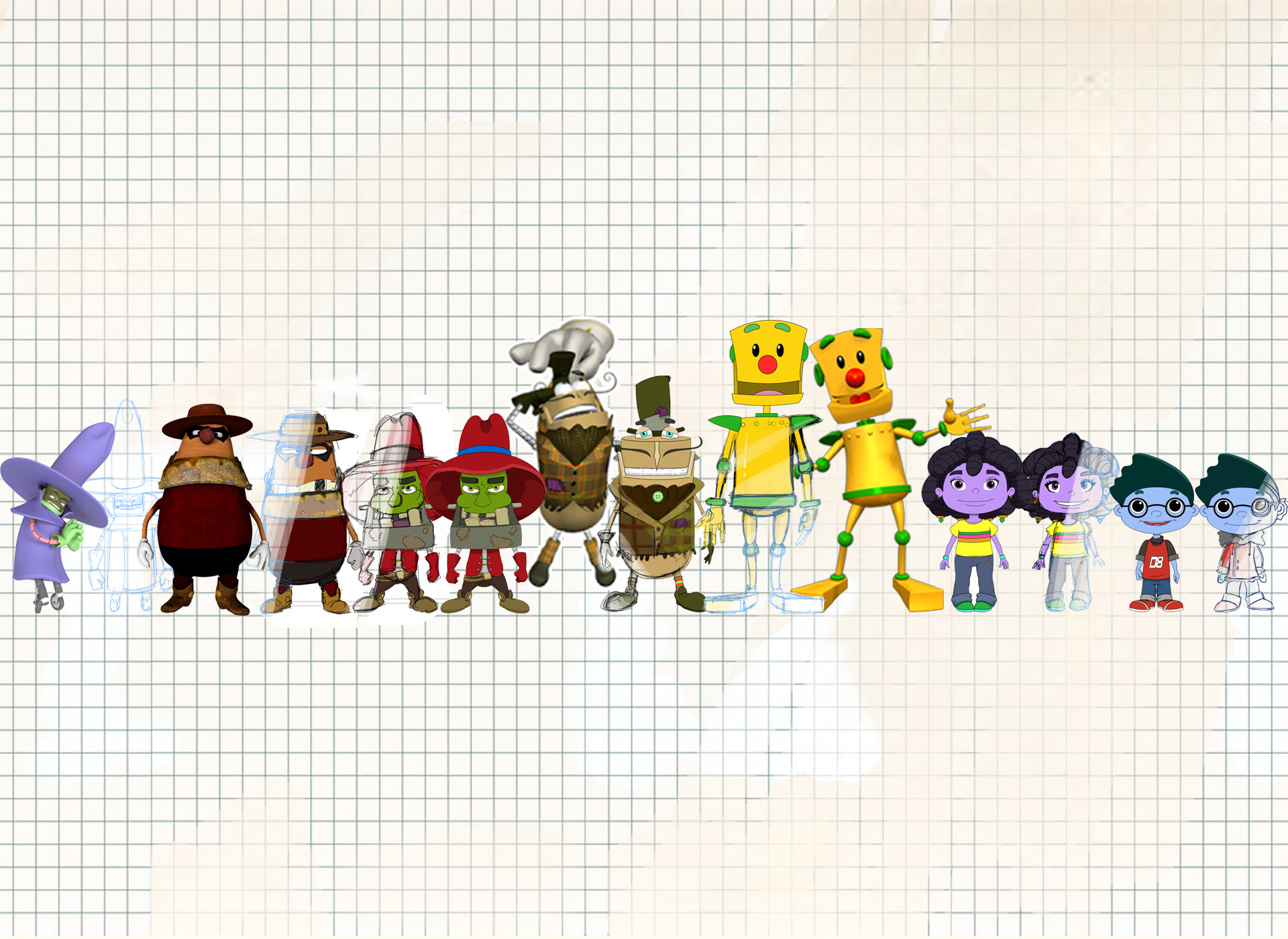The Rise of Clicky: How NetSmartz Made Internet Safety Fun
Picture this: It was 1999, Y2K was on the horizon and a brand-new space called the World Wide Web was practically becoming a household term. The internet was relatively new, it was exciting, and it offered both unprecedented opportunities and challenges.
For kids, the internet was especially intriguing. Suddenly, they had access to a wealth of information, games and educational resources at their fingertips. However, the benefits of a vast online world also came with significant risks, as the internet also introduced new dangers, including threats of exploitation and abuse.
At the National Center for Missing & Exploited Children (NCMEC), the spread of the internet posed a question – how can we teach kids to be safe from dangers online?
The solution? A rapping, golden-yellow robot and a few of his friends.

Original concept art for “Router’s Birthday Surprise” (Credit: NCMEC)
As the internet became a permanent fixture in children's lives, NCMEC’s partners at the Boys & Girls Clubs of America (BGCA) recognized the need for online safety education. When it came to developing this content, BGCA turned to NCMEC, and from this collaboration, a state-of-the-art program called NetSmartz was born.
The program, titled “NetSmartz Workshop” provided BGCA with original, animated characters and age-appropriate, interactive activities that used 3-D technology to entertain kids while equipping them with the knowledge and skills they needed to navigate the digital world safely.
After development, a grant from Congress and a donation from a computer company named Compaq, NetSmartz Workshop was pilot tested in September 2001 and launched nationwide to all BGCA clubs in August 2002.
But what made the NetSmartz program so unique?
It was entertaining, age-appropriate and entirely free to the public.
And it had Clicky.

NetSmartz characters Webster, Clicky and Nettie (Credit: NCMEC)
At the heart of the NetSmartz program was Clicky, who quickly became the program's beloved mascot. With his distinctive high-pitched voice and catchy songs, Clicky captured the attention of young audiences, making online safety both fun and memorable. He was joined by his friends, Nettie and Webster, as they faced off against the Webville Outlaws – characters representing the various dangers children might encounter online – Potty-Mouth Pete, Meet-Me Mack, Wanna-Know Wally and Look-At-This Louie.
In 2003, the NetSmartz website officially launched, providing children ages 5-17 with online educational content, including videos, games, activity cards and presentations.
After its release, Clicky and the NetSmartz gang only gained popularity. Their viewership moved from Boys & Girls Clubs to schools, traveling state-by-state until Clicky and his safety raps were becoming known nationwide.

NetSmartz mascot Clicky greeting his friends (Credit: NCMEC)
As the internet evolved, so did Clicky and his friends. In 2010, NCMEC released its first long-form NetSmartz project, a 30-minute animated feature titled “Router’s Birthday Surprise.”
Then, nine years and a lot of animated work later, Clicky and his friends evolved again. In 2019, NCMEC launched “Into the Cloud.” Created for children ages 10 and under, “Into the Cloud” uses data from real-life CyberTipline reports to address the latest trends in online safety. In 2021, the series launched its second season, focused on preventing online exploitation, sextortion and reporting, and removing inappropriate content online.

“Into The Cloud” (Credit: NCMEC)
Today, NetSmartz looks a little different than it did when it first launched back in 2001. Then again, so do the types of dangers children face online. Reports of online enticement are increasing rapidly. In 2023 alone, NCMEC’s CyberTipline received 36.2 million reports of suspected child sexual exploitation online.
“Over the years, the NetSmartz program has had to evolve to help children and the adults in their lives prepare for the changing risks kids face online,” said Stacy Garrett, vice president of NCMEC’s Content & Community Engagement Division. “But one thing that has never changed is our goal to empower children with the knowledge and confidence they need to make safer choices online.”
And it’s not just to teach kids. NetSmartz offers content for parents, teachers and even law enforcement. Today, NetSmartz is used in countries around the world, garnering 1.6 million pageviews to the website and 400,000 streams of video content over the last year.
So today, while Clicky’s animation may be a bit more advanced and the NetSmartz gang may have a few more challenges to face, the core mission of NetSmartz is as vital as ever: to empower children, teens and their caregivers with the tools and knowledge they need to navigate the digital world safely.

Clicky and his friend high-five (Credit: NCMEC)
In addition to online dangers, NCMEC also released KidSmartz, a child safety program that educates kids grades K-5 and families about preventing abduction and practicing safer behaviors. For more information on KidSmartz, visit our website here: https://www.missingkids.org/education/kidsmartz.
For more information on NetSmartz and to access NetSmartz content, visit our website here: https://www.missingkids.org/netsmartz/home.
